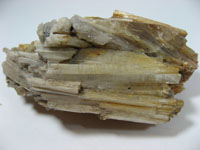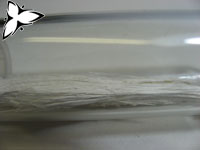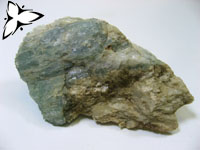![]()
Tremolite is a member of the amphibole group of minerals. The fibrous form of tremolite is one of the six recognized types of asbestos. This material is toxic and inhaling the fibers can lead to asbestosis and lung cancer both pleural and peritoneal mesothelioma. Fibrous tremolite is sometimes found as a contaminant in vermiculite, chrysotile, and talc. Tremolite was first described in 1789 for an occurrence in Campolungo, Piumogna Valley, Leventina, Ticino (Tessin), Switzerland. Even though fibrous tremolite is considered a hazard to living beings, approximately 36,500 tonnes of tremolite asbestos are mined annually in India. It is otherwise only found as a contaminant with other minerals.
![]()
Within the metaphysical realm of minerals, tremolite is one of the high vibration crystals, and resonates with a powerful energy. Its energy is felt within the highest chakras... and is particularly noticeable at both the third eye and crown chakra. Its energy is known to help the believer to open new pathways in the brain, allowing them to access the morphic field of knowledge. The believer may progress up from the crown chakras into the transpersonal chakras, where they will be enabled to access information available in the spiritual realms.
Please note that MIROFOSS does not suggest in any way that minerals should be used in place of proper medical and psychological care. This information is provided here as a reference only.
![]() Tremolite was historically used in a variety of commercial and industrial products because of its ability to insulate and fireproof materials. However, due to the health issues created by various asbestos minerals, tremolite is now seldomly used.
Tremolite was historically used in a variety of commercial and industrial products because of its ability to insulate and fireproof materials. However, due to the health issues created by various asbestos minerals, tremolite is now seldomly used.
![]()
Tremolite can be found as a result of contact metamorphism of Ca-Mg siliceous sediments, regional greenschist metamorphism of ultramafic rocks or magnesium carbonate rocks.
![]()
Tremolite forms a series with actinolite and ferro-actinolite. Pure magnesium tremolite is creamy white, but the colour grades to dark green with increasing iron content. Tremolite is an indicator of metamorphic grade since at high temperatures it converts to diopside.
Other than in the basic mineral form, tremolite can be found in two distinct varieties:
![]()
| Cleavage | Perfect, Distinct | |
| Colour(s) | Colourless, Brown, Gray, White, Light green | |
| Specific Gravity | 3.05 | |
| Diaphaneity | Transparent to Translucent | |
| Fracture | Sub Conchoidal - Fractures developed in the brittle materials characterized by semi-curving surfaces | |
| Mohs Hardness | 5.0 to 6.0 | |
| Luminescence | Fluorescent, Short UV - yellow, Long UV - pink | |
| Lustre | Vitreous to Pearly | |
| Streak | White | |
| Habit(s) | Columnar to Massive fibrous to Massive granular | |
| Radioactivity | Non-radioactive | |
| Magnetism | Non-magnetic | |
| Electrical | Non-Electric |
![]()
The following health hazards should be noted when handling tremolite:
 |
BIOHAZARD Tremolite can cause asbestosis, lung cancer, and both pleural and peritoneal mesothelioma. |
![]()
The following image shows the Elemental breakdown of the mineral tremolite along with the mineral crystal structure.
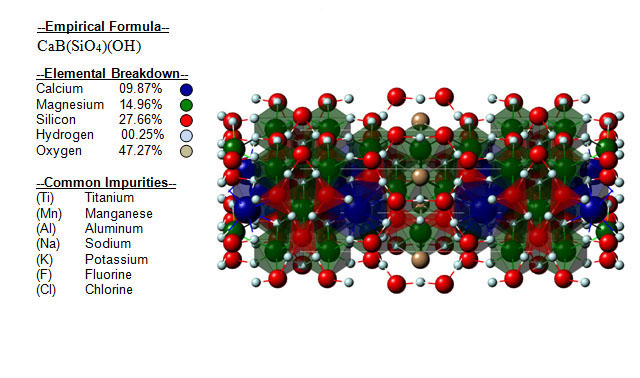
![]()
| Crystal System | Monoclinic |  |
| Class | Prismatic | |
| Axial Ratios | a : b : c = 0.5449 : 1 : 0.2923 | |
| Morphology | Elongated, stout prismatic, bladed crystals | |
| Optical Data Type | Biaxial (-) | |
| Pleochroism (x) | Colourless | |
| Pleochroism (y) | Colourless | |
| RL Values | nα = 1.599 - 1.612 nβ = 1.613 - 1.626 nγ = 1.625 - 1.637 |  |
| 2V | Measured: 88° to 80°, Calculated: 82° to 84° | |
| Max Birefringence | δ = 0.026 (See colour chart at right) | |
| Surface Relief | Moderate | |
| Dispersion | Weak r < v | |
![]()
Tremolite can be referenced in certain current and historical texts under the following seven names:
The mineral tremolite can be translated into the following select languages:
| Arabic | الترموليت | Bulgarian | тремолита | Chinese (Sim) | 透闪石 |
| Croatian | tremolit | Czech | Tremolit | Danish | Tremoliet |
| Dutch | tremoliet | Esperanto | Estonian | tremoliiti | |
| Finnish | Tremoliitti | French | Trémolite | German | Tremolith |
| Greek | τρεμολίτης | Hebrew | טרמוליט | Hungarian | tremolit |
| Italian | Japanese | 透閃石 | Korean | 트레 | |
| Latin | Lithuanian | tremolitas | Norwegian | ||
| Persian | ترمولیت | Polish | Tremolit | Portuguese | tremolita |
| Romanian | tremolit | Russian | Тремолит | Slovak | Tremolit |
| Spanish | Tremolita | Swedish | tremolit | Tagalog | |
| Turkish | tremolitlere | Ukrainian | тремоліт | Vietnamese |
![]()
Tremolite can be found in many places around the world. The map below shows major documented concentrations of tremolite:
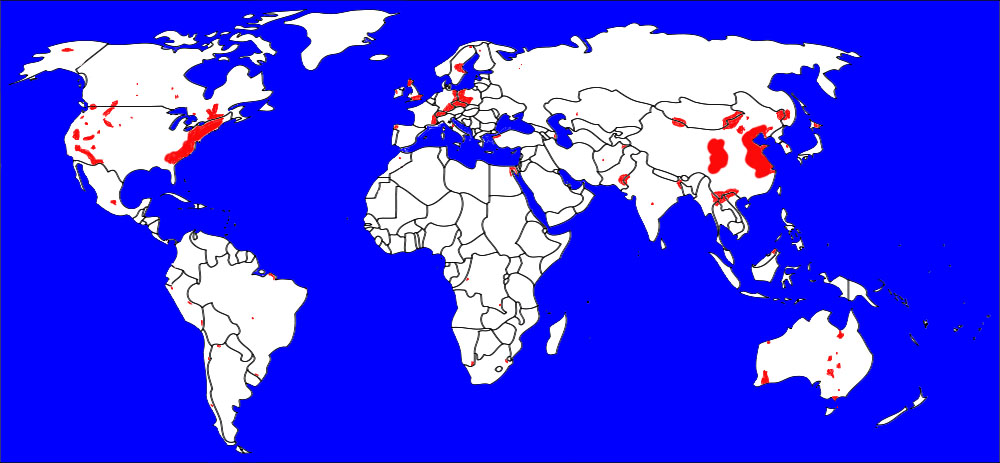
![]()
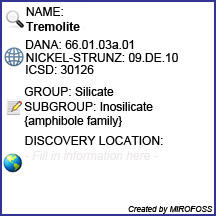 |
The MIROFOSS database offers free printable geological identification tags for personal and non-profit use. These tags can be used to properly identify mineral samples in your collection. -Click here- to download a full size jpeg image for a tremolite identification tag; which can be printed on paper or used with a plastic laser printer. |
 |
What's this? What can I do with it? |
![]()
| Chemical Composition | Hawthorne, F.C. and Grundy, H.D. (1976) The crystal chemistry of the amphiboles; IV, X-ray and neutron refinements of the crystal structure of tremolite. Canadian Mineralogist: 14: 334-345. |
| Crystallography | Hawthorne, F.C., Della Ventura, G., and Robert, J.-L. (1996) Short-range order of (Na,K) and Al in tremolite: An infrared study. American Mineralogist: 81: 782-784. |
| Crystallography | Ishida, K. Hawthorne, F.C., and Ando, Y. (2002) Fine structure of infrared OH-stretching bands in natural and heat-treated amphiboles of the tremolite-ferroactinolite series. American Mineralogist: 87: 891-898. |
| History | Hawthorne, F. C. and Oberti, R. (2006): On the classification of amphiboles. Canadian Mineralogist 44, 1-21. |
| Geograpcial Data | Mindat.org. Retrieved on 2012-04-26 |
| Physical Identification | Webmineral.com. Retrieved on 2012-04-26. |
| April 26, 2012 | The last time this page was updated |
| ©2017 MIROFOSS™ Foundation | |
 |
|

